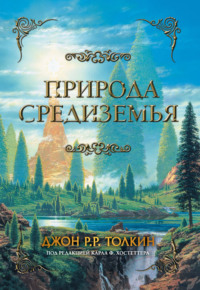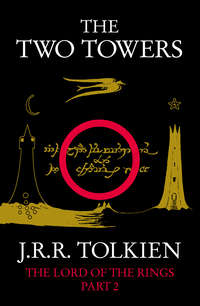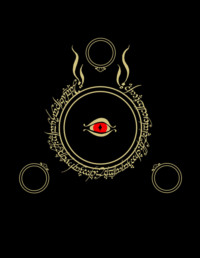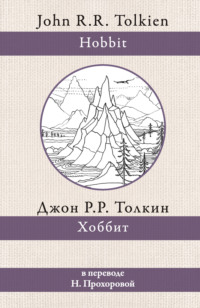
Полная версия
Roverandom


Roverandom
By
J.R.R. Tolkien
Edited by
CHRISTINA SCULL &
WAYNE G. HAMMOND

This book is dedicated to the memory of
Michael Hilary Reuel Tolkien
1920–1984
Contents
Title Page
Dedication
Introduction
Roverandom
Chapter 1
Chapter 2
Chapter 3
Chapter 4
Chapter 5
Notes
Works by J.R.R. Tolkien
Copyright
About the Publisher
Introduction
IN THE SUMMER of 1925 J.R.R. Tolkien, his wife Edith, and their sons John (nearly eight), Michael (nearly five), and Christopher (not yet one year old) went on holiday to Filey, a town on the Yorkshire coast which is still popular with tourists. It was an unexpected holiday, in celebration of Tolkien’s appointment as Rawlinson and Bosworth Professor of Anglo-Saxon at Oxford, which he was to take up on 1 October that year; and it was perhaps intended as a period of rest for him before he not only assumed that post, but for two terms would continue to teach at the University of Leeds, as his old and new appointments overlapped. For three or four weeks at Filey – as explained below, the dates are uncertain – the Tolkiens rented an Edwardian cottage which may have belonged to the local postmaster, built high on a cliff overlooking the beach and the sea. From this vantage point the view to the east was unobstructed, and young John Tolkien was thrilled when for two or three beautiful evenings the full moon rose out of the sea and shone a silver ‘path’ across the water.
At this time Michael Tolkien was extremely fond of a miniature toy dog, made of lead and painted black and white. He ate with it and slept with it, and carried it around with him; he was reluctant to let it go even to have his hand washed. But during the holiday at Filey he went for a walk with his father and elder brother, and in the excitement of skimming stones into the sea put his toy down, onto the beach of white shingle. Against this background the tiny black and white dog became virtually invisible, and was lost. Michael was heartbroken when his toy could not be found, although the two older boys and their father searched for it that day and the next.
The loss of a favourite toy is of great moment to a child, and no doubt it was with this in mind that Tolkien was inspired to invent an ‘explanation’ for the occurrence: a story in which a real dog, named Rover, is turned into a toy by a wizard, is lost on a beach by a boy very much like Michael, meets a comical ‘sand-sorcerer’, and has adventures on the moon and under the sea. At least, that is the full story of Roverandom, as it was finally set down on paper. That it did not emerge fully formed, but was devised and told in several parts, might be deduced from its episodic nature, and from its length; and in fact this is verified by a tantalizingly brief entry in Tolkien’s diary (written almost certainly in 1926 as part of a résumé of events of 1925) about the composition of Roverandom at Filey: ‘The tale of “Roverandom” written to amuse John (and myself as it grew) got done.’ Unhappily it is not possible to know exactly what Tolkien meant by ‘got done’ – no more, perhaps, than that the complete story (as it then stood) was told during the holiday. The parenthetical note, however, confirms that the tale did indeed grow in the telling.
It is curious that only John is mentioned in this diary statement, when it was Michael’s misfortune which lay behind the story of Rover. It may be that Michael was satisfied with its earliest episode, which explained the disappearance of his toy, and was less interested than John in its continuation. Tolkien himself clearly warmed to the tale, which becomes more sophisticated as it proceeds. But it is nowhere recorded, and no one can now say, exactly in what form Roverandom was originally conceived – whether all of its clever twists of language and its allusions to myths and legends, for example, were part of the story from the beginning, or were added when Roverandom was at last written down.
Tolkien also wrote in his diary, after the same interval of a few months, that the family went to Filey (from Leeds) on 6 September 1925 and remained there until 27 September. But at least the first of these dates cannot be correct (and indeed is mistakenly recorded in the diary as a Saturday rather than a Sunday). Given that John Tolkien’s memory of the full moon shining upon the sea is still vivid, and that the sight was surely the inspiration for Rover’s journey along a ‘moon-path’ early in Roverandom, the Tolkiens must have been at Filey during the period of the full moon, which in September 1925 began on Tuesday the 2nd. They can also be placed at Filey, more definitely, in the afternoon of Saturday, 5 September, when the north-east coast of England was struck by a terrific storm. Again John Tolkien’s memory is vivid, and it is supported by newspaper reports. The sea rose hours before the scheduled high tide, swept over the sea wall and across the promenade at Filey, devastated structures along the shore, and threw the beach into upheaval – destroying in the process any remaining hope of finding Michael’s toy. Fierce winds shook the Tolkiens’ cottage so much that they were kept awake into the night, fearing that the roof would come off. John Tolkien remembers his father telling the two older boys a story to keep them calm, and that it was at this time that he began to tell them about the dog Rover who became the enchanted toy ‘Roverandom’. The storm itself no doubt inspired the late episode in Roverandom in which the ancient Sea-serpent begins to awaken, and in so doing causes a great disturbance in the weather. (‘When he undid a curl or two in his sleep, the water heaved and shook and bent people’s houses and spoilt their repose for miles and miles around’ [see here].)
There is no evidence that Roverandom was written down while Tolkien was at Filey. However, one of the five illustrations he made for the story, the lunar landscape reproduced in this book, is dated 1925, and it is conceivable that it was drawn at Filey during that summer. Three of the remaining illustrations for Roverandom date specifically from September 1927, while the Tolkiens were on holiday at Lyme Regis on the south coast of England: The White Dragon Pursues Roverandom & the Moondog, inscribed to John Tolkien; House Where ‘Rover’ Began His Adventures as a ‘Toy’, inscribed to Christopher Tolkien; and the splendid watercolour The Gardens of the Merking’s Palace. On each of these is written the month and year; another drawing, of Rover arriving on the moon riding upon the seagull, Mew, is inscribed ‘1927–8’. All of these pictures are also reproduced in the present book. The evidence of the September 1927 illustrations suggests that Roverandom was retold at Lyme Regis, perhaps because the Tolkiens were once again on holiday by the sea and recalled the events at Filey only two years earlier. The inscription to Christopher Tolkien on House Where ‘Rover’ Began His Adventures as a ‘Toy’ suggests as well that Christopher was now old enough to appreciate Roverandom (he was of course only an infant in September 1925), and that the story may have been retold at least partly because he had not heard it on the previous occasion.
This apparent revival of interest in Roverandom in summer 1927 may have been the spur that led Tolkien at last to commit the story to paper; for he seems to have done so later that year, probably during the Christmas holidays. So we are inclined to think – and we can only conjecture, in the absence of dated manuscripts or other firm evidence – on the basis of two interesting (if admittedly tenuous) points. Each of these concerns the end of chapter 2 of Roverandom, where it is told how the Great White Dragon is disturbed by Roverandom and his friend the moon-dog and pursues them in a wild chase. The dragon is described as often a troublemaker: ‘Sometimes he let real red and green flames out of his cave when he was having a dragon-feast or was in a tantrum; and clouds of smoke were frequent. Once or twice he had been known to turn the whole moon red, or put it out altogether. On such uncomfortable occasions the Man-in-the-Moon … went down into the cellars, uncorked his best spells, and got things cleared up as quick as possible’ (see here). In the present episode his pursuit of the two dogs is stopped by the Man-in-the-Moon only in the nick of time, by a magic spell shot at the dragon’s stomach. Because of this ‘the next eclipse was a failure, for the dragon was too busy licking his tummy to attend to it’ (see here) – a reference to the notion, established in the earlier passage, that lunar eclipses are caused by dragon-smoke.
Elements of this chapter of Roverandom – one of which (a troublesome dragon on the moon) certainly was part of the story in September 1927, as shown by the dated illustration – also appear, in a strikingly similar form, in an unpublished portion of the story-letter Tolkien wrote to his children in December of that year in the guise of ‘Father Christmas’. In this, one of the remarkable series of ‘Father Christmas’ letters Tolkien wrote between 1920 and 1943, the Man-in-the-Moon visits the North Pole and drinks rather too much brandy while eating plum pudding and playing ‘snapdragon’. He falls asleep and is pushed under the sofa by the North Polar Bear, where he remains until the next day. In his absence dragons come out on the moon and make such a great smother that they cause an eclipse. The Man-in-the-Moon is forced to hurry back and work a terrific magic to set things right.
The similarities between this fiction and the Great White Dragon episode in Roverandom are too great to be coincidental; and from these one can reasonably suppose that Tolkien had Roverandom in his thoughts while writing his ‘Father Christmas’ letter in December 1927. Whether he introduced the notion of moon-dragons causing eclipses first in the letter, or drew for that purpose upon a conception already existing in Roverandom, it is impossible to say; but the two works must be related.
The Christmas holidays offered Tolkien time away from his academic responsibilities, in which Roverandom could have been written down; and although it is not definite that he did so in December 1927, one other clue points to that date, at least as a terminus a quo for the earliest (undated) extant text: the reference in Roverandom to a failed eclipse. In the earliest text ‘the next eclipse was a failure’ (as quoted above) is followed by the note ‘the astronomers [> photographers] said so’. And this indeed was the prevailing opinion, reported in the Times of London, of the total lunar eclipse that occurred on 8 December 1927 but was hidden from observers in England by clouds. On this point the 1927 ‘Father Christmas’ letter is once again useful, for it dates the eclipse that occurred in the Man-in-the-Moon’s absence precisely to 8 December, and thereby confirms Tolkien’s knowledge of the real-world event.
The earliest extant text of Roverandom is one of four versions among the Tolkien papers in the Bodleian Library, Oxford. Unhappily one-fifth of it has been lost, equivalent to the present chapter 1 and the first half of chapter 2. The remainder survives on twenty-two pages, written quickly in an occasionally difficult hand on a variety of blank sheets (torn possibly from school exercise books), and with numerous emendations. This text was followed by three typewritten versions, likewise undated, in the course of which Tolkien progressively enlarged the story and made many improvements of expression and detail but no major change of plot. The first typescript, on thirty-nine heavily corrected pages, was closely based on the manuscript and has been of great help in deciphering the less legible parts of the earlier version. But the typescript is notably distinguished from its predecessor towards the end, where the passage in which Rover is restored to his original shape and size (before almost an anticlimax, now a dramatic as well as humorous moment) was greatly expanded. The new text was entitled originally The Adventures of Rover, but Tolkien altered the heading in pen to Roverandom, thereafter the title he preferred.
The second of the three typescripts breaks off, apparently by conscious decision of the author, after only nine pages, with only a few lines on the final sheet. It extends from the beginning of the story to the point where the moon ‘began to lay its shining path on the water’ (cf. below, chapter 2, here). In addition, a fragment of writing is typed on what is now the verso of one sheet, which was immediately rejected by Tolkien and the text taken up again, further revised, and continued on the recto. As far as it goes, the second typescript incorporates revisions noted on the first and includes some further improvements. But it is perhaps more important to note the neat appearance of this version, compared with the first typescript. Tolkien now was concerned with matters of presentation, such as typing page numbers on the sheets rather than adding them later in pen, and breaking dialogue into paragraphs to indicate different speakers, whereas before (in what is clearly a working document) it was sometimes run on. Also the new typescript includes only a handful of manuscript emendations, all carefully made and for most part only of typographical errors.
This improved manner of presentation leads us to suspect that Tolkien prepared the second typescript for submission to his publisher, George Allen & Unwin, towards the end of 1936. At that time The Hobbit had been accepted with enthusiasm, and although it was only in production and had not yet proved a success, on the strength of it Tolkien was invited to submit other children’s stories to be considered for publication. He obliged by sending to Allen & Unwin his picture book Mr. Bliss, his mock-medieval story Farmer Giles of Ham, and Roverandom. If, as we think, the fragmentary second typescript of Roverandom was made for this purpose, it may be that Tolkien abandoned it because its text still was not wholly to his liking – or perhaps because, like the preceding drafts, it was made on sheets torn apparently from exercise books, with one long edge slightly ragged, and the author wished his work to have a more professional appearance.
Indeed the third and latest typescript of Roverandom is neatly typed (although not without emendations) complete on sixty sheets of commercial bond paper (although not entirely uniform); and it was here that chapter divisions were introduced, together with further changes, small but numerous, of dialogue and description, and of punctuation and the division of paragraphs. This is almost certainly the text that Tolkien submitted to Allen & Unwin and that the chairman of the firm, Stanley Unwin, gave to his young son Rayner to appraise.
In a report dated 7 January 1937 Rayner Unwin found the story ‘well written and amusing’; but despite his positive review it was not accepted for publication. Roverandom was apparently one of the ‘short fairy stories in various styles’ that Tolkien had (it was thought) practically ready for publication in October 1937, as Stanley Unwin noted in a memo; but by then The Hobbit was so successful that Allen & Unwin wanted a sequel, with more about hobbits, above all else, and Roverandom seems never again to have been considered by either author or publisher. Tolkien’s attention now became primarily directed towards the ‘new Hobbit’, the work that would become his masterpiece: The Lord of the Rings.
It is not too much to say that The Lord of the Rings might not have come into being were it not for stories like Roverandom; for their popularity with the Tolkien children, and with Tolkien himself, led at last to a more ambitious work – The Hobbit – and so to its sequel. For the most part, these stories were ephemeral. Few were written down, and of those not many were finished. Tolkien settled happily into his role as a storyteller to his children, from at least 1920 when he wrote the first of the ‘Father Christmas’ letters. There were also stories of the villain Bill Stickers with his adversary Major Road Ahead, of the very small man Timothy Titus, and of the flamboyant Tom Bombadil, who was based on a Dutch doll that belonged to Michael Tolkien. None of these went very far, although Tom Bombadil later found a niche in poems and in The Lord of the Rings. An extremely odd tale of greater length, The Orgog, was written in 1924 and is extant in a typescript; but it is both unfinished and undeveloped.
In contrast Roverandom is complete and well-crafted; and it is further distinguished among Tolkien’s children’s fiction of this period for the unrestrained delight with which its author indulged in wordplay. It contains a richness of near-homonyms (Persia and Pershore), and of onomatopoeia and alliteration (‘yaps and yelps, and yammers and yowls, growling and grizzling, whickering and whining, snickering and snarling, mumping and moaning’, see here), of descriptive lists humorous by their length (such as the ‘paraphernalia, insignia, symbols, memoranda, books of recipes, arcana, apparatus, and bags and bottles of miscellaneous spells’ in Artaxerxes’ workshop, see here), and of unexpected turns of phrase (‘[The Man-in-the-Moon] vanished immediately into thin air; and anybody who has never been there will tell you how extremely thin the moon-air is’, see here). It includes as well a number of ‘childish’ colloquialisms, such as whizz, splosh, tummy, and uncomfy, which are of particular interest for their like is rarely met with in Tolkien’s published writings, having been omitted ab initio in his manuscripts or deleted in revision (as tummy was altered in The Hobbit to stomach). Here they are surely survivals from the story as it was originally told orally to the Tolkien children.
That Tolkien also included in Roverandom words such as paraphernalia, and phosphorescent, primordial, and rigmarole, is refreshing in these later days when such language is considered too ‘difficult’ for young children – a view with which Tolkien would have disagreed. ‘A good vocabulary,’ he once wrote (April 1959), ‘is not acquired by reading books written according to some notion of the vocabulary of one’s age-group. It comes from reading books above one’ (Letters of J.R.R. Tolkien [1981], pp. 298–9).
Roverandom is remarkable too for the variety of biographical and literary materials that went into its making. First among them of course was Tolkien’s own family, and the author himself: in Roverandom the Tolkien parents and children are seen or (in baby Christopher’s case) referred to, the cottage and beach at Filey appear in three chapters, Tolkien several times expresses his feelings about litter and pollution, and events of the 1925 holiday – the moon shining upon the sea, the great storm, and above all the loss of Michael’s toy dog – are elements in the tale. To these Tolkien added a wealth of references to myth and fairy-story, to Norse sagas, and to traditional and contemporary children’s literature: to the Red and White Dragons of British legend, to Arthur and Merlin, to mythical sea-dwellers (mermaids, Niord, and the Old Man of the Sea among many), and to the Midgard serpent, alongside borrowings from, or at least echoes of, the ‘Psammead’ books of E. Nesbit, Lewis Carroll’s Through the Looking-glass and Sylvie and Bruno, even Gilbert and Sullivan. It is a wide range, but these diverse materials combined well in Tolkien’s hands, with little incongruity and much amusement – for those who recognize the allusions.
We identify and discuss many of Tolkien’s sources (definite or probable) for Roverandom – as also obscure words, a few matters which are specific to Britain and may be unfamiliar to readers from other lands, and subjects of special interest – in brief notes following the text. But here, in this general introduction, it seems good to call attention to a few points at greater length.
In his 1939 Andrew Lang lecture On Fairy-Stories Tolkien criticized the ‘flower-and-butterfly minuteness’ of many depictions of fairies, citing in particular Michael Drayton’s Nymphidia with the knight Pigwiggen riding on a ‘frisky earwig’ and ‘making an assignation in a cowslip-flower’. But at the time of Roverandom he had not yet eschewed whimsical ideas such as moon-gnomes riding on rabbits and making pancakes out of snowflakes, and sea-fairies who drive in shell carriages harnessed to tiny fishes. Only some ten years earlier he had published a now famous piece of juvenilia, the poem ‘Goblin Feet’ (1915) in which the author hears ‘tiny horns of enchanted leprechauns’ and dwells on ‘little robes’ and ‘little happy feet’; and as Tolkien once confessed, in the 1920s and 1930s he was ‘still influenced by the convention that “fairy-stories” are naturally directed to children’ (Letters, p. 297, draft of April 1959). Therefore he sometimes adopted common ‘fairy-story’ imagery and modes of expression: the playful, singing elves of Rivendell in The Hobbit, for example, and both in that work and (even more so) in Roverandom, a prominent authorial (or parental) voice as narrator. Later Tolkien regretted having in any way ‘written down’ to his children, and wished especially that ‘Goblin Feet’ could be buried and forgotten. Meanwhile, the Fairies (later Elves) of his imagined ‘Silmarillion’ mythology stood tall and noble, with little trace of ‘Pigwiggenry’.
Roverandom almost inevitably was drawn towards Tolkien’s mythology (or legendarium), which by then he had developed for a decade or more and which remained for him a preoccupation. Several comparisons may be made between these works. The garden on the dark side of the moon in Roverandom, for example, closely recalls the Cottage of Lost Play in The Book of Lost Tales, the earliest prose treatment of the legendarium. In the latter children ‘danced and played …, gathering flowers or chasing the golden bees and butterflies with embroidered wings’ (Part One [published 1983], p. 19), while in the moon-garden they are ‘dancing sleepily, walking dreamily, and talking to themselves. Some stirred as if just waking from deep sleep; some were already running wide awake and laughing: they were digging, gathering flowers, building tents and houses, chasing butterflies, kicking balls, climbing trees; and all were singing’ (see here).
The Man-in-the-Moon will not say how the children arrive in his garden, but at one point Roverandom looks towards the earth and seems to see, ‘faint and rather thin, long lines of small people sailing swiftly down’ the moon-path (see here); and as the children come to the garden while asleep, it seems certain that Tolkien had in mind his already existing vision of the Olórë Mallë or Path of Dreams leading to the Cottage of Lost Play: ‘slender bridges resting on the air and greyly gleaming as it were of silken mists lit by a thin moon’, a path no man’s eyes have beheld ‘save in sweet slumbers in their heart’s youth’ (The Book of Lost Tales, Part One, p. 211).










